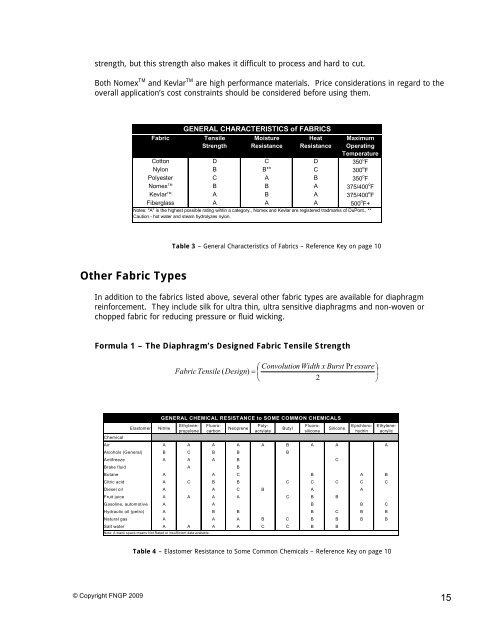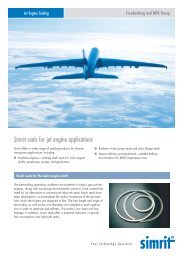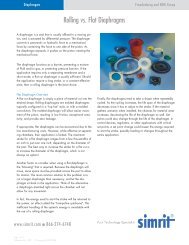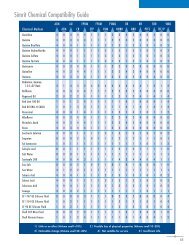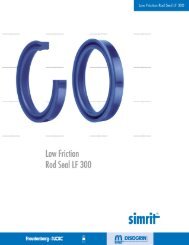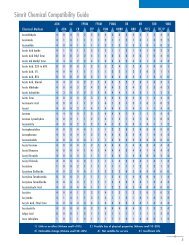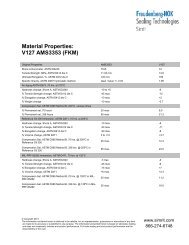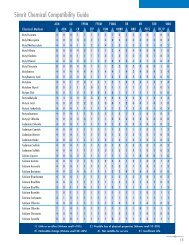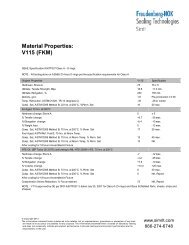Diaphragm Design Manual - Simrit
Diaphragm Design Manual - Simrit
Diaphragm Design Manual - Simrit
You also want an ePaper? Increase the reach of your titles
YUMPU automatically turns print PDFs into web optimized ePapers that Google loves.
strength, but this strength also makes it difficult to process and hard to cut.Both Nomex TM and Kevlar TM are high performance materials. Price considerations in regard to theoverall application’s cost constraints should be considered before using them.FabricGENERAL CHARACTERISTICS of FABRICSTensileStrengthMoistureResistanceHeatResistanceMaximumOperatingTemperatureCotton D C D 350 o FNylon B B** C 300 o FPolyester C A B 350 o FNomex TM B B A 375/400 o FKevlar TM A B A 375/400 o FFiberglass A A A 500 o F+Notes: "A" is the highest possible rating wihtin a category., Nomex and Kevlar are registered tradmarks of DuPont., **Caution - hot water and steam hydrolyzes nylon.Table 3 – General Characteristics of Fabrics – Reference Key on page 10Other Fabric TypesIn addition to the fabrics listed above, several other fabric types are available for diaphragmreinforcement. They include silk for ultra thin, ultra sensitive diaphragms and non-woven orchopped fabric for reducing pressure or fluid wicking.Formula 1 – The <strong>Diaphragm</strong>’s <strong>Design</strong>ed Fabric Tensile Strength Convolution Width x Burst Pr essureFabric Tensile ( <strong>Design</strong>) 2ElastomerGENERAL CHEMICAL RESISTANCE to SOME COMMON CHEMICALSNitrileNeopreneButylSiliconeChemicalAir A A A A A B A A AAlcohols (General) B C B B BAntifreeze A A A B CBrake fluid A BButane A A C B A BCitric acid A C B B C C C C CDiesel oil A A C B A AFruit juice A A A A C B BGasoline, automotive A A B B CHydraulic oil (petro) A B B B C B BNatural gas A A A B C B B B BSalt water A A A A C C B BNote: A blank space means Not Rated or insufficient data available.EthylenepropyleneFluorocarbonPolyacrylateFluorosiliconeEpichlorohydrinEthyleneacrylicTable 4 – Elastomer Resistance to Some Common Chemicals – Reference Key on page 10© Copyright FNGP 200915


